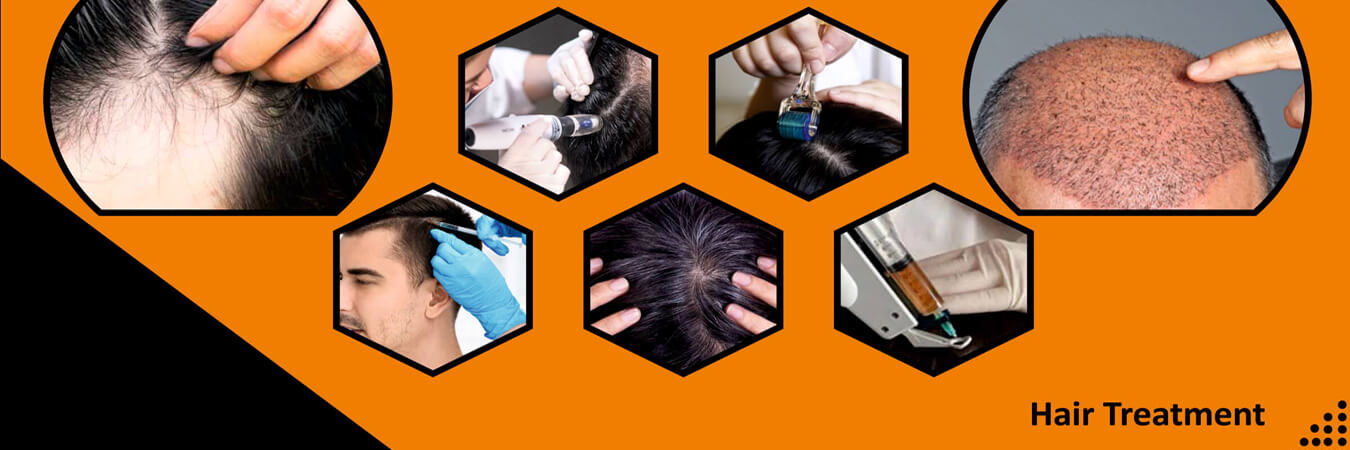


Anyone with a balding scalp and a good donor area can undergo hair transplant surgery. The donor area is the area from which hair follicle grafts are extracted. This includes the back of the scalp. Additional factors like hair color and texture also influence the hair transplant results. Hair transplant surgery can improve your overall appearance and boost your confidence and self-esteem.
People with hair thinning in the back of the scalp (donor area) and advanced degrees of hair loss are not suitable for hair transplant surgery.
Also, people with uncontrolled high blood pressure, blood-clotting problems, or the tendency to form excessive scars are at high risk of complications during and after surgery.
Hair transplantation mainly consists of 4 stages. These stages are:
1. Preparation for Hair Transplantation
2. Graft Harvesting
3. Recipient Site Creation
4. Transplantation of Hair Follicles
The preparation stage involves disinfection of the harvesting (donor) and transplantation (recipient) area, and more importantly, the administration of anesthesia.
Although it is a procedure before hair transplantation, in a sense, the phase that determines the comfort of the operation is this stage where anesthesia is is administered.
Anesthesia in Hair Transplantation Hair transplant is performed under local anesthesia, which is administered through injection.
Implantation of the extracted hair follicle grafts in the last step. The surgeon needs to be careful not to damage the hair roots while holding and transferring them during the implantation. We follow highly advanced techniques to maximize graft survival and their maximum growth.
Follicular unit extraction (FUE) is associated with a shorter recovery time than other hair transplant surgeries. Hence,
FUE is the most popular procedure performed across the globe.
Use anti-inflammatory pain killers such as Paracetamol to reduce the pain and discomfort that occurs after surgery.
Take a few days off from work to allow bruising and swelling around your hairline to subside.
It’s absolutely normal if your scalp looks pink and feels tight. The areas where the donor's hair has been implanted will have crusted or formed scabs which will fall off a few days later.
DOs
♦ Spray the normal saline on the transplanted hair regularly for one week. Use saline water that will be given to you by the clinic.
♦ Continue with the anti-hair loss oral medications and should start minoxidil one month after the surgery.
♦ You may continue with your daily activities as usual.
♦ Cover the head with a surgical cap for a minimum of 3 weeks to prevent exposure to heat, dust, and sun rays.
♦ Use sterile normal saline provided from the clinic to water the roots for the first week. Afterward, you may use mineral water.
♦ Use sterile normal saline provided from the clinic to water the roots for the first week. Afterward, you may use mineral water.
DONTs
♦ Avoid alcohol consumption for the first 2 days.
♦ Do not use tap water over the transplanted hair till 2 weeks.
♦ Avoid bending down for the first 5 days to prevent swelling.
♦ Do not use the hairdryer.
♦ Do not scratch the transplanted hair.
♦ Do not comb the transplanted hair with a comb.
♦ Do not do icing of the transplanted area or the face.
♦ Do not rub the transplanted area with gauze from front to back.
♦ You can start wearing your own loose cap/ hat/ bandana over the surgical cap 5 days after the procedure. Avoid woolen caps. Avoid wearing the helmet for at least 6 weeks after the surgery.
♦ After the first 2 weeks, do not cover the head with a cap unnecessarily.
♦ Use an ice pack to reduce any swelling or bleeding during the first week but do not place this onto the grafted area. Place it either on your forehead or at the back of your head.
The newly transplanted hair will shed; it is a normal reaction to hair transplant known as ‘thermal shock.’ After hair sheds, they will start to regrow in 5 - 6 weeks.
The transplanted hair grafts start growing new hair. After three months, the newly grown hair starts following the normal growth/ loss cycle. Boost the growth of this hair by opting for a PRP session.
Witness the full result of your hair transplant between 6 and 12 months after the surgery.
Hair transplant is performed under local anesthesia and is injected locally on the scalp. There are many measures by which the pain can be reduced and kept very minimal. One can expect an ant bite sensation at the site of injection, which is very much tolerable. However level of minimal pain experienced can vary depending on the pain threshold of an individual.
Yes, the transplanted hair is permanent and lasts longer as it is hormone-independent but may still show wear and tear as age advances due to the process of aging.
An eyebrow is a significant part of a human face. It defines one appearance and characteristics. They form part of
emotional expressions during communication with others.
Losing eyebrows can be more traumatic than losing hair from the scalp. Eyebrow loss may occur because of skin diseases like alopecia areata, leprosy, advancing age, permanent makeup, and chemotherapy.
An eyebrow transplant procedure is performed to restore the lost eyebrows.